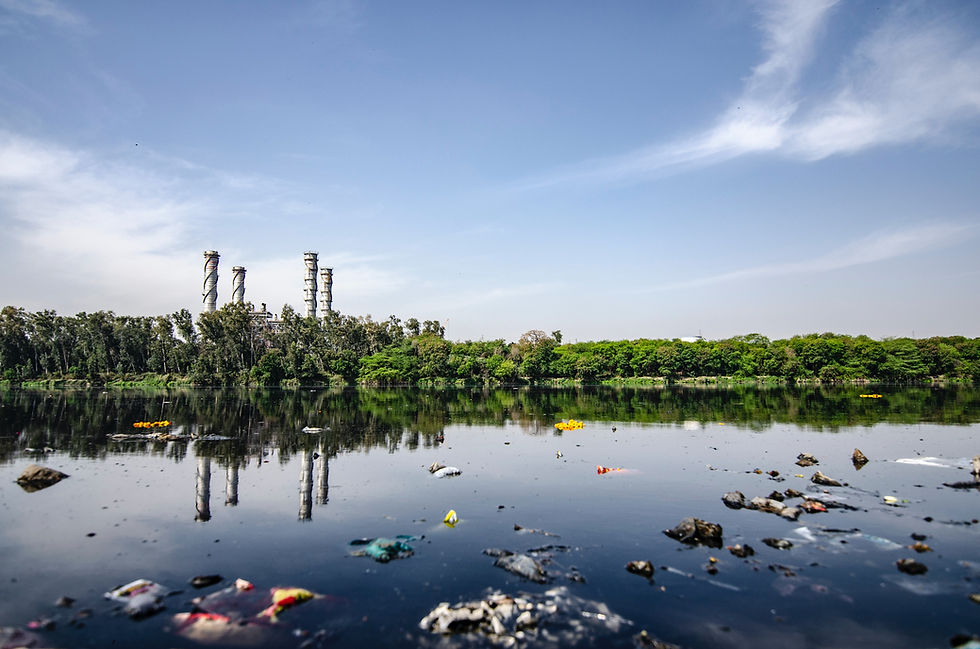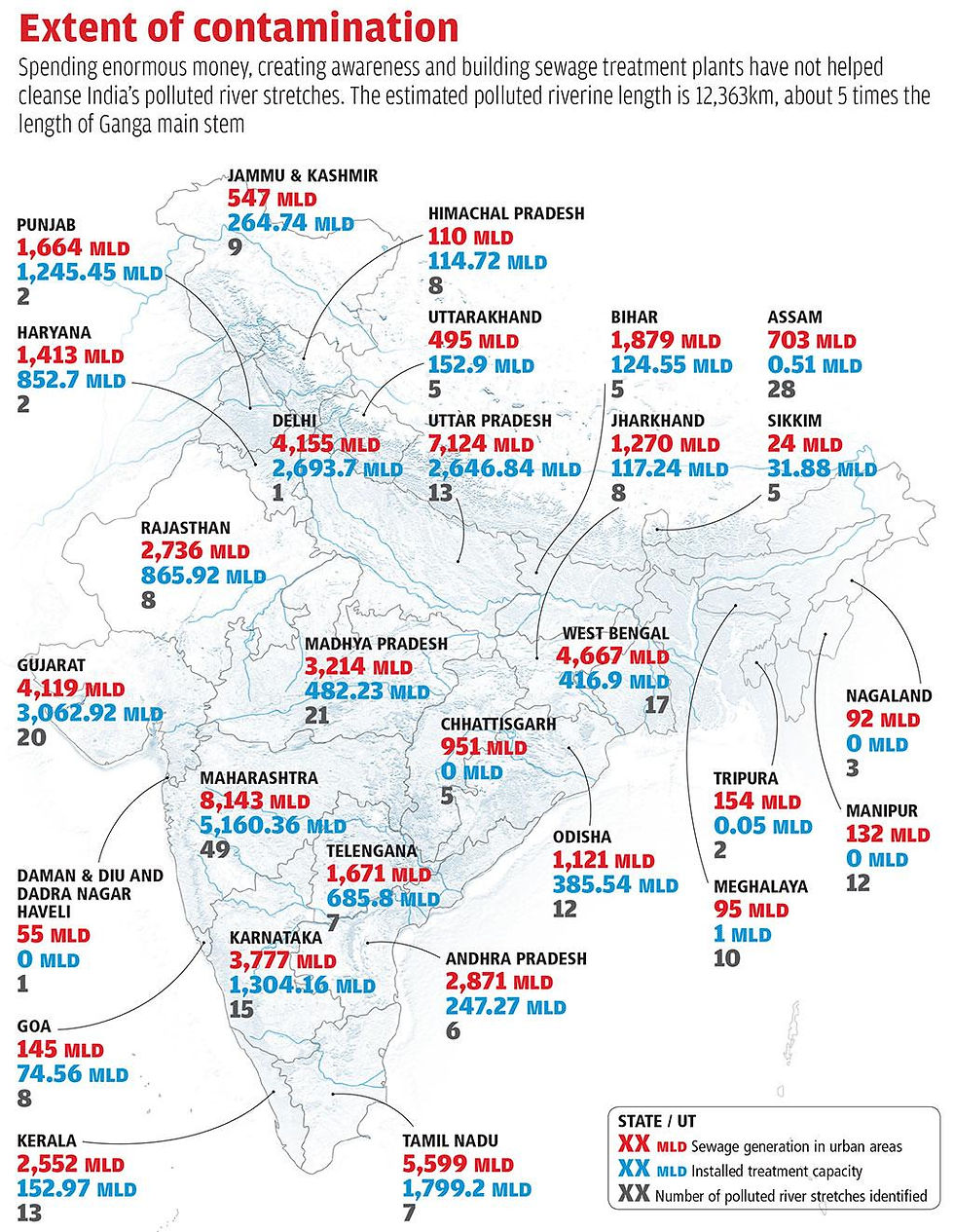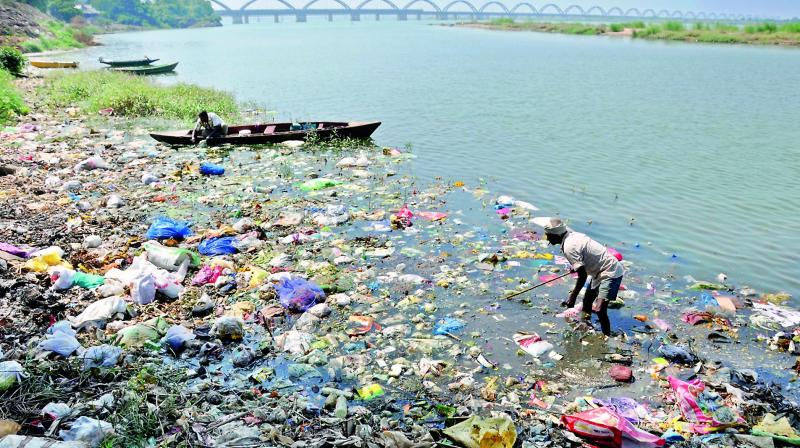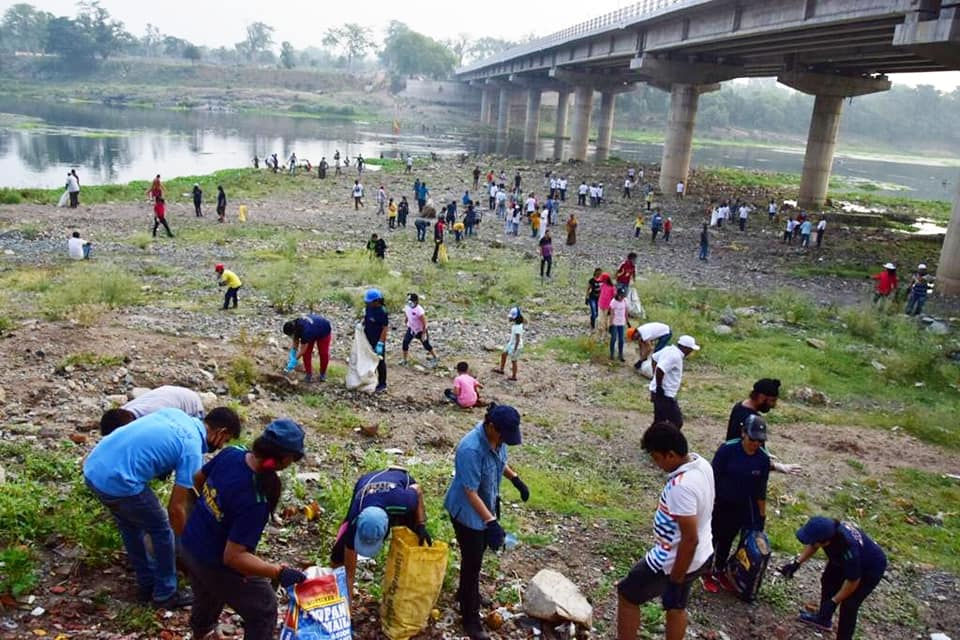Can the River become Human trash??
- Rahul Kumar
- Apr 16, 2022
- 6 min read
The flow of rivers is part of a greater flow, the planet's water cycle, which sustains not only the flow of water but the entire web of life. Ultimately, the condition, or health, of the aquatic biota is the best means of understanding and controlling humans' impact on the Earth's watercourses and on the whole water cycle. Biological monitoring, especially multimetric approaches such as the index of biological integrity, acknowledges the importance of rivers' biotic integrity and offers one of the strongest available tools for diagnosing, minimizing, and preventing river degradation.
"Water and air, the two essential fluids on which all life depends, have become global garbage cans. - Jacques Yves Cousteau"

Fossil fuels offered among others new transport means and possibilities for trading as well as unprecedented options to modify riverine environments. Fossil fuels enabled the systematic channelization of rivers and supported their damming or stocking of nonnative species on a global scale. Industrialization loosened the century-long tight connection of major parts of societies from their local and regional environmental resources and gave way to new practices of exploiting riverine ecosystem services.
Facts
Freshwater on earth is only 2.5% of the total water when 70% of the earth's surface is covered by water.
Around 70% of industrial waste is dumped to water.
80% of the water pollution is caused due to domestic sewage.
More than 6 billion pounds of garbage, mainly plastic end up in the oceans every year.
The contaminated water is the main cause of various diseases such as cholera and typhus.
15 million children under the age of five years die every year from diseases caused by drinking contaminated water.
On average 250 million people succumb each year from diseases caused by the contaminated water while according to the World Health Organization and UNICEF almost 2.5 billion people lack access to valuable health conditions.
The nuclear crisis created by the tsunami of 2011, unleashed 11 million liters of radioactive water into the Pacific Ocean.
The same tsunami debris created islands totaling 70 kilometers in length which float in the ocean.
Asia has the highest number of contaminated rivers than any other continent, mainly of bacteria from human waste.
Almost two million tons of human waste are exposed daily to water.
The Ganges river in India is considered the most polluted river in the world and contains dirt, garbage, dead animals and humans.
A Central Pollution Control Board (CPCB) report of 2015 brought out the fact that 61,948 million litres of urban sewage is generated on a daily basis in India. But the cities have an installed sewage treatment capacity of only 38% of this.
As a result, more than 38,000 million litres of waste water goes into the major rivers, water bodies and even percolates into the ground every day.

Impacts
Pollution :
It is difficult to control because it is often the result of human infrastructure around a river. Pollution enters the river, sometimes in small amounts, at many different locations along the length of the river.
The clearing of forests to produce farmland has led to ongoing erosion, with large quantities of sediment deposited into rivers.
Urban areas add to this pollution when contaminants (PAHs and heavy metals) are washed off hard surfaces such as roads and drain into water systems. Sulfur dioxide and nitrous oxide emitted from factories and power stations enter river systems through acid rain. Sewage and effluent are discharged into rivers in some areas.
Pollution can lower the pH of the water, affecting all organisms from algae to vertebrates. Biodiversity decreases with decreasing pH.

Flow modifications :
Dams alter the flow, temperature and sediment in river systems. Reduced flow alters aquatic habitats – reducing or removing populations of fish, invertebrates and plants that depend on the flow to bring food. Reduced flow also decreases tributary stream flow, changing habitats and altering the water table in the stream aquifer. Consequently, riverside vegetation may be affected and decline in numbers. This may affect animal biodiversity, for example, bird species may leave the area if their habitat is lost or altered.
Changes in water temperature due to flow modification can affect insect development by not allowing them to complete their life cycle.
Exotic species :
Exotic species have been introduced to river systems sometimes intentionally (for example, for fishing purposes or as food for other species) and sometimes unintentionally (for example, species come in on the bottom of boats or on fishing gear or they escape from pond areas during flooding).These organisms can affect native species. They may compete with them for prey and habitat. Once established, these species can be difficult to control or eradicate, particularly because of the connectivity of the flowing river. They can easily migrate to many areas affecting native species.
Harvesting :
Excessive fishing in river ecosystems can drastically reduce numbers of species. For example, numbers of eels and whitebait in the Waikato River have reduced since the 1970s. Commercial eeling began in the 1960s and peaked in the 1970s with an annual average catch of 2000 tonnes. In the early 1980s, 400–450 tonnes per annum were harvested, with less than 200 tonnes per annum harvested since 2000.
Whitebait tonnage has also drastically reduced from an average of 46 tonnes per annum in the 1950s to 3 tonnes in 2000. Reducing stocks of a particular species can have an effect on other species such as birds that feed off river fish. The birds leave the area when river fish decline. Find out more about whitebaiting.
Solutions
Use Less Plastic : It is very difficult to break down plastic after it is produced. Much of the plastic we consume ends up in the world’s water supply, where it is even harder to fish out and safely throw away. Plastic waste also spreads decay in the water supply.
Reuse : Whenever you buy something that is not recyclable, such as plastic, it is better to reuse this item as many times as possible. This habit limits your consumption and means less of those products will end up in the world’s rivers, lakes, and oceans.
Recyclable : If there are two options for a particular item, try to pick the one that is easily recyclable. Glass bottles are much better for the environment than plastic, for example.
Plant trees or any plants near bodies of water : So that when it rains, the topsoil with personal chemicals will not get washed away. Big trees will help prevent soil erosion. When the soil is eroded, the pesticides and chemicals on the land will be washed away and carried on the sea.
Cleaning Chemicals : Similar to oils, cleaning chemicals are hazardous when they enter the water supply. If you are emptying containers of household cleaning supplies, do it in the trash can, not in the sink.
Handle Toxic Chemicals Properly : The toxic chemicals like ammonia, bleach, paint, paint thinner, and many other chemicals are becoming a severe problem, and if these are dumped down the drain or the toilet, the effects add up. Therefore proper disposal of these is important.
Garbage Disposal : Even though most houses and local community have a garbage disposal system in the river bank. This system can break down solid objects, but those items are harmful to the water supply. It is better to throw them in the trash.
Stop Immersion of Ashes in the River : While it is a common practice, especially in the Hindu religion, to immerse the ashes of a deceased person into the holy water of sacred river Ganga, it pollutes the river water and adversely affects the water quality. Dead bodies are cremated on the river banks. Partially burnt bodies are also flung into the river to keep up with religious faiths.
Don’t throw object from pujas or havans in the river. Instead, put biodegradable materials such as samagri or flowers in plant pots or composting piles, and recycle all paper and plastics.
When placing offerings in river, make sure your offerings are 100% natural and biodegradable (no plastics). If your offering is in a plastic bag, make sure to take the offering out of the bag and recycle the bag. Ganga is considered a great purifier, but plastics kill all life in its waters and along its banks.
Don’t use river as a bathroom. Instead use a community toilet.
Volunteer and help Cleaning of Rivers and Locality : Sometimes you cannot afford to donate, but you can volunteer to help clean up the local rivers or help collect thrown away chemicals from local residents. Some environmental groups regularly need volunteer labor, join them.

Note: Pre Covid picture.






Comments